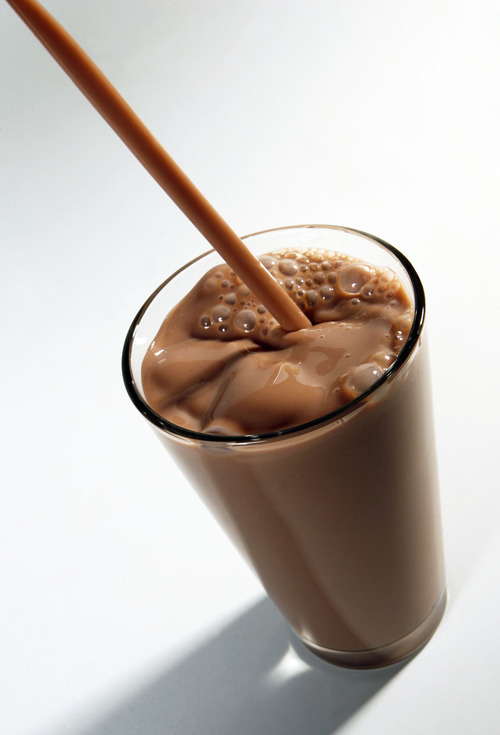This is an archived article that was published on sltrib.com in 2011, and information in the article may be outdated. It is provided only for personal research purposes and may not be reprinted.
Is it OK to let your kids drink chocolate milk? Yes, but not every day.
"Chocolate milk should be something not forbidden, but not preferred," says Dana H. Clarke, M.D., associate professor at the Utah Diabetes and Endocrinology Center.
Because parents and health officials complained about chocolate milk in schools, several school districts removed the sweet drink from breakfast and lunch menus.
They expected kids to switch to regular white milk. Instead, the overall consumption of milk decreased by nearly one-third.
Jessica Cooper, director of the Health and Fitness Institute at LDS Hospital, suggests that schools offer students more beverage options. Introducing other milk alternatives, such as soy or almond milk, will give students the same nutrients as milk, but with far less sugar and fewer calories than chocolate milk.
The Institute of Medicine encourages serving chocolate milk in schools, but has recommended that schools switch to fat-free chocolate milk, which has hardly more calories than white 1 percent milk.
Kelly Orton, director of child nutrition for the Salt Lake City School District, is a strong supporter of serving chocolate milk in schools. It isn't impossible to encourage kids to eat more vegetables, but persuading your child to drink a glass of chocolate milk is much easier. In fact, it would take three or four food items to match milk's contribution of vitamins and minerals.
"We're fighting a battle every day trying to find food that the children will eat," Orton says.
But what's easiest isn't always best.
"Let's just keep the kids happy and give them a lot of sugary chocolate milk," Cooper says sarcastically.
Cooper believes education starts in the home and parents need to teach their children to make healthy choices. Whether it's a classmate's birthday party, Halloween or school lunch, schools will always have plenty of junk food readily available for students, and children need to know how to handle the temptations.
In her own home, Cooper provides a healthy breakfast and dinner, knowing that children tend to eat less healthy at school.
Her advice to other parents: Serve your children the healthiest food possible when they are at home.
To Drink — or not to drink — chocolate milk
Pros:
1. •It has the same essential vitamins and minerals as regular milk.
2. • It is a good choice for children who won't drink regular milk.
3. •It contains protein and carbs, making it a good recovery drink after rigorous exercise.
Cons
1. • It contains more than twice the amount of sugar as regular milk — 26 grams vs. 12 grams.
2. • Because it's sweet, there is a tendency to overconsume, contributing to weight gain.
3. • Most children don't participate in enough rigorous exercise to need it as a "recovery" drink.



